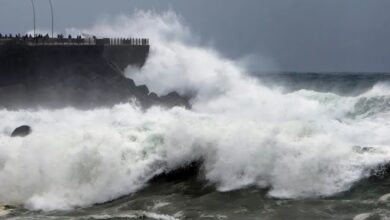Greenland’s thawing problem: a point of no return?
Global warming is a reality that is affecting different ice structures. Let's see why Greenland is one of the most affected .

The thaw enabled an Arctic maritime shortcut between Europe and Asia to be set up. / Photo: Pixabay
LatinAmerican Post | Ariel Cipolla
Listen to this article
Leer en español: El problema del deshielo en Groenlandia: ¿un punto de no retorno?
The problem of global warming is seen everywhere. For example, the Los Andes website mentions that, as a result of this, trees grow faster … although they die earlier. Regardless of what happens in forests, it also seriously affects ice-formed structures, something that can be seen in Greenland.
Recently, the Magnet Xataka website revealed that Greenland "reached the point of no return", because it will continue to lose ice in the short term. This is important if we consider that it is the largest island in the world, which is made up, almost 80%, of giant ice. Let's see what the worrying situation implies.
The thawing in Greenland and its influence on the planet
The thawing problem occurs all over the world. For example, the Infobae website had mentioned that it allowed for an Arctic maritime shortcut between Europe and Asia. Despite this situation, the consequences could be catastrophic if this problem persists, something that has been happening in Greenland.
This leads to media such as La Razón indicating that Greenland "will suffer the greatest thaw in its history", losing ice faster in this century than in the last 12,000 years. This situation, therefore, has a clear culprit: greenhouse effect emissions, which arose as a result of global warming.
All that huge mass of ice on the island could disappear in the coming decades with a speed much greater than in the last 11,700 years, according to a study by American scientists in Nature. The exact amount that would be lost will depend on public policies to reduce the emission of greenhouse gases, with the aim of avoiding catastrophic consequences.
This is a situation that has actually been going on for years.This can be observed, according to LM Neuquén, in that Antarctica and Greenland, for example, are melting and causing a rise in sea level. Hence, the cities of the world that are on the coast are affected, where it could lead to an increase of more than 28 centimeters from the sea at a global level.
Also read: Climate change drives plants to extinction in the Black Forest in Germany, study finds
From El País they add another effect, which will be the increase in world temperature by almost another half degree. That is, the thaw that causes global warming, at the same time, can increase global warming. Therefore, this massive thaw would raise temperatures by 0.43º as a global average.
At the same time, from Energya VM they report that not only cities and coasts would be in danger, but also ecosystems. The ecological balance could end, because the thaw phenomenon would affect the landscape of the places. So we are talking about damage on a global scale and not just one on a regional level.
At the same time, the unprecedented loss of ice from Greenland, for National Geographic, is more important than it seems, because it generates a "mass" effect that would cause the continued melting of other places. As it is one of the places with the highest level of ice in the world, its care will be essential to preserve the planet.




